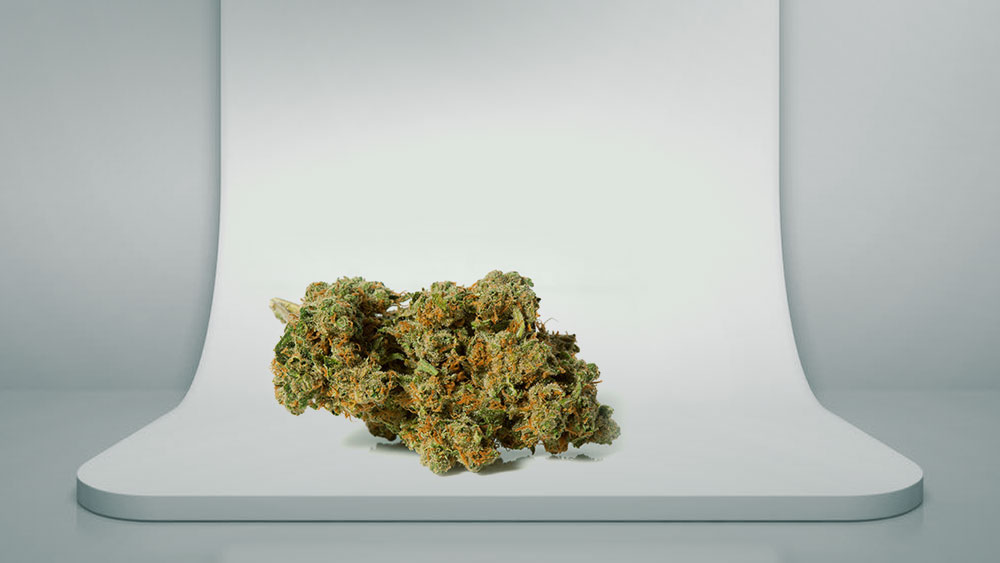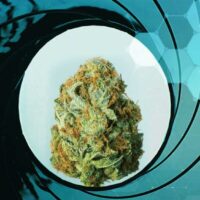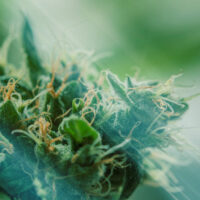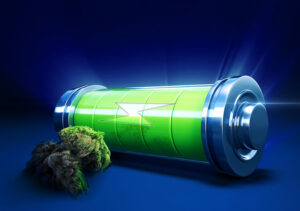Many cannabis strains gained legendary status over the years, but only a handful of them had as big an influence on cannabis genetics as Durban Poison.
Durban Poison is my personal favorite strain in the whole wide cannabis world. Although its mysterious name may raise some eyebrows and make people wonder about its harsh potency and “poisonous” effect, once you try it, you’ll wish you never stop smoking it.
Maybe I am exaggerating, but still, I really love that energizing and uplifting feeling that makes everything I do seem fun and easy. Durban Poison gives a truly sensational high and I am not the only one who thinks that.
High Times magazine listed Durban Poison as one of the greatests strains of all times, and it’s especially popular in Colorado.
It parented many quality hybrids that are popular and loved today, but the pure form of this strain has no comparison.
Durban Poison origin
Durban Poison is a Sativa strain that originates from the beautiful, sunny port city of Durban in South Africa.
It is a landrace strain, meaning that it is a 100% pure Sativa cultivated in its natural habitat that hasn’t been crossbred with any other cannabis strains.
Landrace strains are highly valued among scientists and cannabis enthusiasts because they have unique characteristics and superior genotypes.
Many landrace strains initially grew only in specific areas of the world, and someone had to bring them to Europe or America to “spread the knowledge” about them. So was the case with Durban Poison as well.
Legend has it that the famous American columnist and cannabis cultivator Ed Rosenthal was the first to discover and introduce Durban Poison to the States in the late ‘70s.
Other sources suggest that Durban Poison was first brought to the Netherlands where it was inbred over the years and adapted to not-so-sunny weather conditions of the Northern Hemisphere.
Whatever the truth, there is no denying that Durban Poison is equally popular on both sides of the Atlantic.
What does Durban Poison taste like?
Durban Poison is well-known for its fresh but zesty anise scent with underlying earthy tones. It is very rich in flavor and after the first hint of delicate citrus aroma, the scent is followed by sweet, piney tones.
Although the terpene limonene (a major component of citrus fruits) participates with only around 3% in the whole terpene formula of Durban Poison, it is the main “culprit” for the citrusy lemon scent and flavor.
The terpene terpinolene, on the other hand, is the most abundant terpene in Durban Poison. It gives this strain a unique natural, piney and fresh taste that is immediately recognizable among veteran smokers.
What does Durban Poison look like?
When grown outdoors, Durban Poison can grow quite tall, reaching 12 feet in height (3,6 meters).
Its flowers tend to be large and dense, colored with a dark green hue. They are covered with heavy trichomes and bright orange hairs. The buds are tight and very sticky, which makes this strain perfect for concentrate extraction.
Durban Poison potency and effect
Durban Poison is considered to be one of the purest Sativa strains on the market.
Its THC (tetrahydrocannabinol) levels can reach up to 25%, which is pretty amazing for a pure Sativa strain. Its CBD (cannabidiol) content, however, is very low and doesn’t exceed more than 0,02%.
But contrary to general belief that weed this strong will knock you out for a reasonable amount of time, this particular strain is known for quite the opposite.
Durban Poison hits you right away with energy and motivation to get things done. You may feel a little buzz in the head at first, but that is just sheer amount of energy that lifts you up immediately. The whole effect can last up to three hours.
Because of the immediate wake-up effect that boosts your productivity, Durban Poison is perfect for daily consumption when you need to deal with a not-so-favorite daily routine or work on things that require a lot of creative energy.
Durban Poison medical properties
It is widely reported that Durban Poison sparks euphoria and happy feelings, therefore it could be a great stress reliever that can help in the treatment of different mood disorders (depression and anxiety).
Condition like ADHD (Attention Deficit Hyperactivity Disorder) could also be treated with Durban Poison because it is a strong stimulus that sharpens focus and productivity.
A little known fact about this powerful strain is that it contains high levels of THCV (tetrahydrocannabivarin), a peculiar psychoactive cannabinoid that can only be found in small traces among Sativa strains from Africa.
THCV is a very similar molecule to good-old THC, with a strong psychedelic effect but a much shorter duration. However, THCV produces a very different effect. It acts as an appetite suppressant, meaning that this cannabinoid can curb your hunger and help you with weight loss.
While most of the other cannabis strains will get you munchies, Durban Poison can actually reduce your appetite and help with diseases like obesity-associated glucose intolerance and type 2 diabetes. Bear in mind that this strain should be avoided if a patient is suffering from anorexia, appetite loss or any other eating disorder.
Like any other THC powerhouse, Durban Poison can be used in the treatment of chronic pain, migraines and fatigue.
Side-effects are very rare but some users have experienced dry mouth, dizziness, dry eyes and in a worst-case scenario: paranoia.
Durban Poison cultivation
The original strain of Durban Poison is cultivated in the humid, subtropical climate of South Africa, with hot summers and dry winters. The perfect temperature for breeding is between 72 and 80 degrees Fahrenheit (22 and 27 Celsius).
Due to its strong genetics and high resistance to moisture, Durban Poison became one of the most praised strains among cultivators. Over the years, Durban Poison adapted to the harsh climate and can now be grown in both Northern and Southern hemisphere.
Durban Poison is also one of the favorite strains for cross-breeding and making new cannabis strains. Some of the really popular strains that emerged from the genes of this Sativa powerhouse are Cherry Pie, Girl Scout Cookies (GSC), Durban Princess, Durban Cookies and many more.
Flowering time is pretty short for this Sativa strain, being ready for harvest 8 to 9 weeks after the seed has been planted.
Harvest time for outdoor plants is usually the end of September or the beginning of October.
On average, outdoor Durban Poison will yield 16 oz (450 grams), while indoor-grown will net around 13 oz (370 grams) per plant.
Durban Poison beer
South African beer company Poison City Brewing used the existing good reputation of Durban poison weed to name their first cannabis-infused beer.
Since 2015, they’ve been producing Durban Poison beer which is made completely from hemp, so it has no psychoactive properties, just a distinct cannabis taste.
This is the first dagga-infused beer in South Africa (dagga is a term commonly used for cannabis in South African slang) and it’s becoming very popular in this country.
Since September 2018, private use of cannabis has been decriminalized in South Africa, while the buying and selling of cannabis and cannabis derivatives still remains illegal.







Kent Taylor March 9, 2020 at 5:51 pm
Nicely written educational article